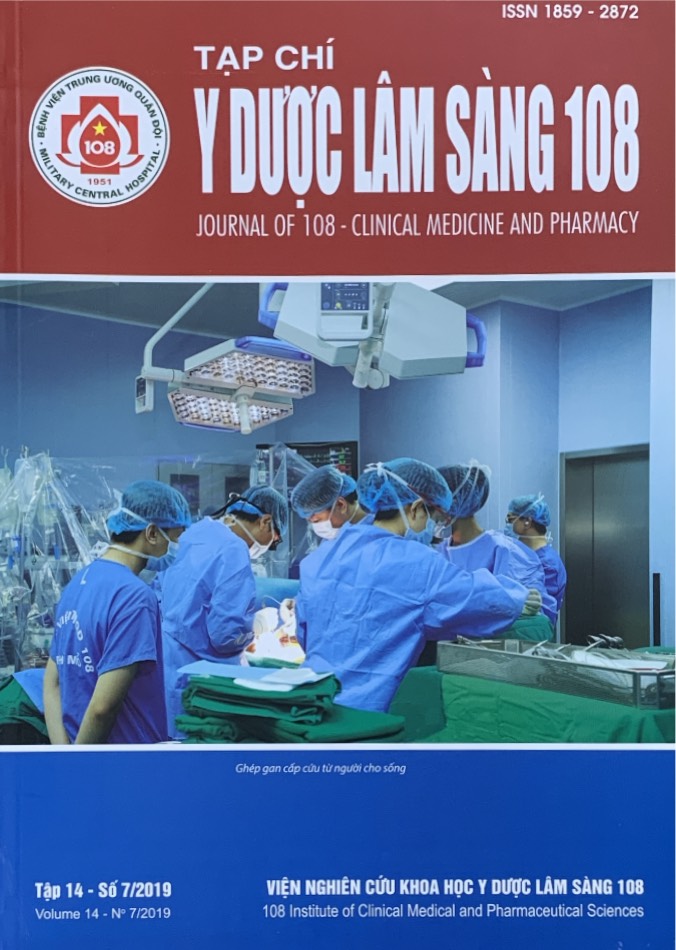Distribution of HPV genotypes and risk factors in men with genital warts at Ho Chi Minh City Hospital of Dermato-Venereology
Main Article Content
Keywords
Abstract
Objective: This study aimed to identify HPV genotypes and risk factors in male patients with genital warts. Subject and method: Samples were collected from 84 male patients with genital warts from March 2019 to September 2019. Result: The identification rate for HPV genotype was 34.52%. The low-risk group of HPV genotypes was 75.86% (58.62% HPV6, 17.24% HPV11), the high-risk group was 24.14% (13.79% HPV16, 6.9% HPV18, 3.45% HPV45). Genotype infection of high-risk and low-risk HPV was statistically significantly associated with a history of sexually transmitted infections (RR = 4.19, p=0.038). Conclusion: HPV6 was the most common. HPV screening was necessary in male patients with genital warts who had a history of sexually transmitted infections.
Article Details
References
2. Cardoso JC, Calonje E (2011) Cutaneous manifestations of human papillomaviruses: A review. Acta Dermatovenerol Alp Pannonica Adriat 20: 145-154.
3. Chang L, Ci P, Shi J et al (2013) Distribution of genital wart human papillomavirus genotypes in China: A multi-center study. J Med Virol 85: 1765-1774.
4. Dunne EF, Nielson CM, Stone KM, Markowitz LE, Giuliano AR (2006) Prevalence of HPV infection among men: A systematic review of the literature. J Infect Dis 194: 1044-1057.
5. Fagundes LJ, Vieira EE, Moyses AC, Lima FD, Morais FR (2013) Sexually transmitted diseases in a specialized STD healthcare center: Epidemiology and demographic profile from January 1999 to December 2009. An Bras Dermatol 88: 523-529.
6. Klaus Wolff et al (2013) Fitzpatrick's color atlas and synopsis of clinical dermatology. McGraw-Hill Education 7th ed: 752-760.
7. Gargano JW, Unger ER, Liu G et al (2017) Prevalence of genital human papillomavirus in males, united states, 2013 - 2014. J Infect Dis 215: 1070-1079.
8. He Z, Liu Y, Sun Y et al (2013) Human papillomavirus genital infections among men, China, 2007 - 2009. Emerg Infect Dis 19: 992-995.
9. Le HHL, Bi X, Ishizaki A, Van Le H, Nguyen TV, Ichimura H (2019) Low concordance of oral and genital HPV infection among male patients with sexually transmitted infections in Vietnam. BMC Infect Dis 19: 578.
10. Sudenga SL, Torres BN, Fulp WJ et al (2016) Country-specific HPV-related genital disease among men residing in Brazil, Mexico and The United States: The HIM study. Int J Cancer 140: 337-345.
11. Ye J, Cheng X, Chen X, Ye F, Lu W, Xie X (2010) Prevalence and risk profile of cervical Human papillomavirus infection in Zhejiang Province, southeast China: A population-based study. Virol J 7: 66.
12. IRAC (2007) Monographs on the evaluation of carcinogenic risks to humans. Volume 90. Human Papillomaviruses. Lyons: IRAC 2007.
 ISSN: 1859 - 2872
ISSN: 1859 - 2872
